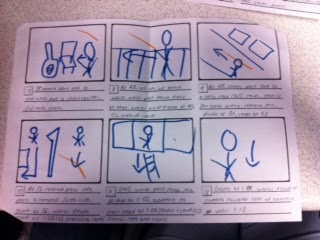Remake of the opening sequence of Juno, by myself and Max Johnson.
What went well: our storyboard was very accurate so it made it easy when it came to filming it for us to work out all of the timings, frames, angles and movements. Also, the editing was shared half and half between me and Max, and we worked together really well. Most of the filming was very successful, the only shots that weren't were the ones that were filmed sideways.
What I learnt: I learnt that it is not as easy as I thought to film a steady shot and using something like a trailer etc to rest the camera on would make the shots more steady. Also, I learnt that I should not film things sideways as when you put them in Adobe Premiere to try and turn it round, it leaves two black spaces at the side.
What I will take to with me to the next production: to the next production, I will take the same attitude when making a storyboard and put the same amount of detail into it to make it easier for filming. Also, I will not film shots the wrong way round and use a prop to get steadier tracking shots. I will take the same work ethic when editing and working with my partner(s).
The storyboard:
Feedback from peers:
Use of camera shots: all of the feedback we received for the use of camera shots was positive and said the shots were 'smooth,' 'clear,' 'accurate' and 'steady.'
Editing: most said the editing was mostly like the original, smooth and clear. However one said our lamp post shot needs to be improved but did not specify how.
Lighting: most said the lighting was natural and like the lighting in Juno. However, one said our lighting could be brightened.
Overall: '8/10,' 'pretty good,' 'good video, different environment of the shots, could put in more editing,' '9/10 very good' 'good and mostly like the original,' '9/10' 'the video as a whole is a success, the transitions are very slick and the camera work was very steady.'










.JPG)
.JPG)
.JPG)
.JPG)
